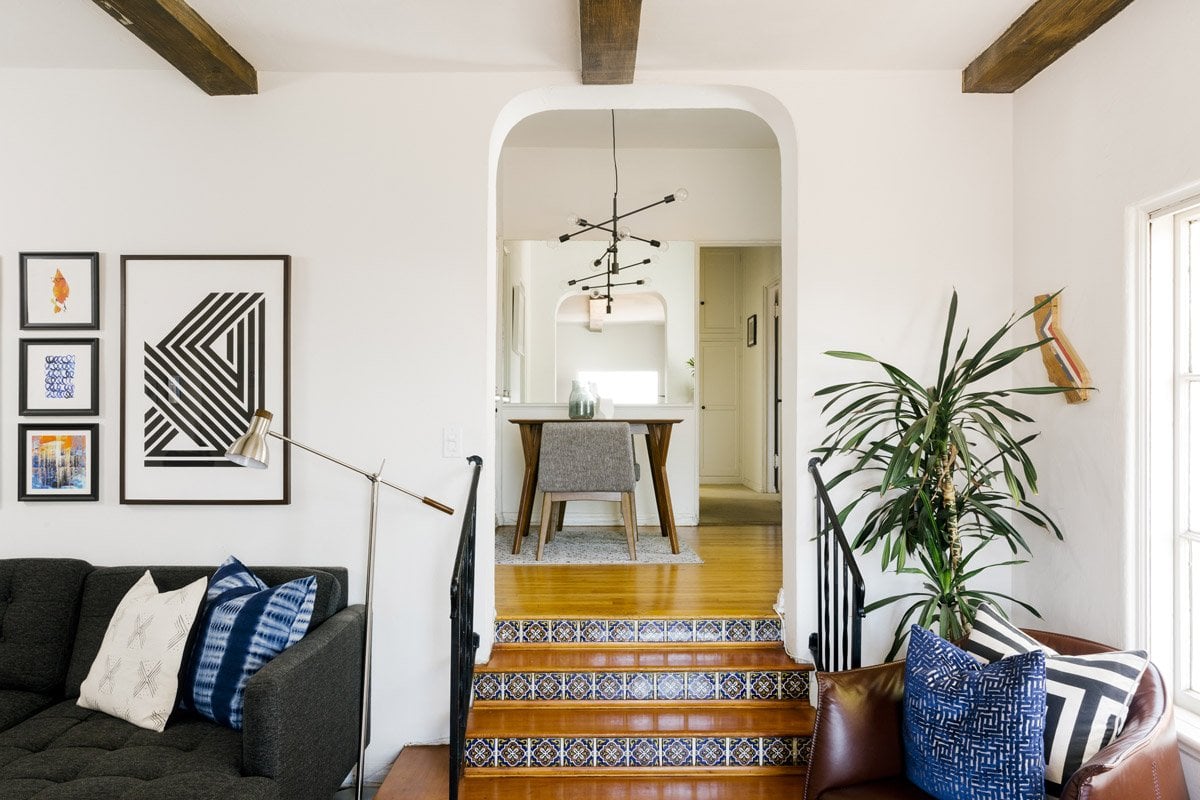Tile floors can be blah, but they can also be breathtaking—just check out @ihavethisthingwithfloors for proof. Tiling floors in the bathroom is a fitting choice given that tile is water resistant and easy to clean, but if you’re considering changing up the floors elsewhere in your home, tile might be the perfect fit.
“Tile is extremely functional for spaces where dirt is tracked in, there is lots of water, or where frequent spills and messes happen,” says Havenly designer Erin West. “For the same reason tile is great in bathrooms, it’s also great for laundry rooms, entryways, mud rooms and kitchens,” she says.
Below, Erin shares some tantalizing tile inspo, along with her tips for helping clients choose the best tile for their tastes and lifestyles.
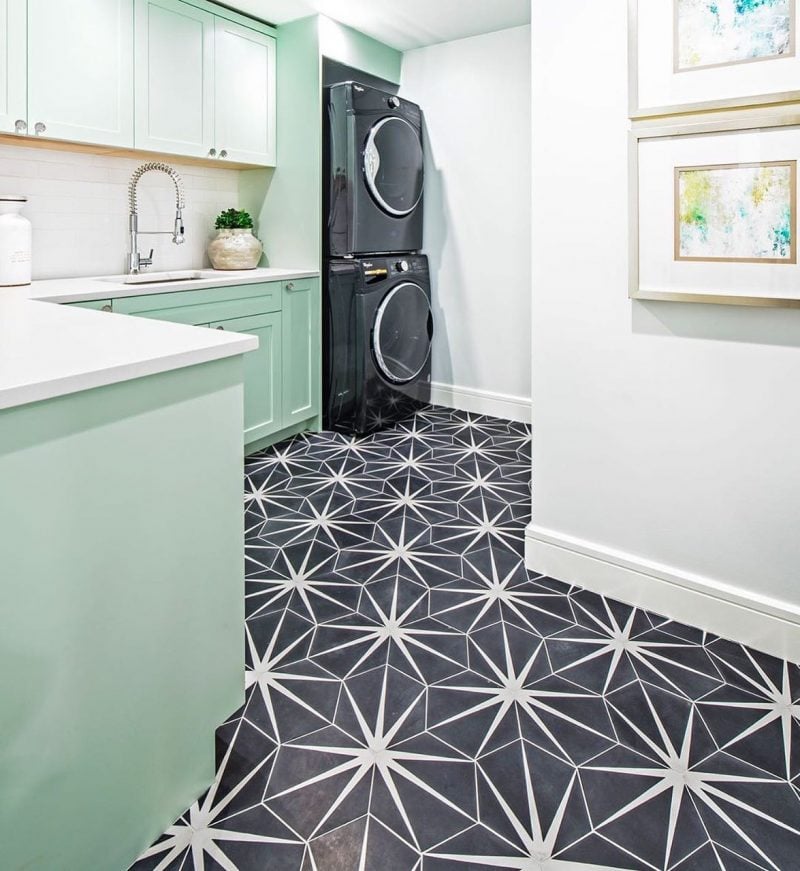
Choosing the right tile for a client starts with function, Erin says. That comes down to two factors: how hard the tile is, and how porous it is. “Some tiles are harder than others (porcelain is one of the hardest), which means that they are very unlikely to chip,” she says. That’s a huge plus when you share a space with kids or simply want something to last for many years. Some tiles are also more porous than others, which means that while they are water resistant, they need to be sealed frequently to stay looking new and prevent water from seeping behind them (cement tiles are a good example of this, Erin says). And some tiles, especially natural stone like marble, can etch or stain, which makes them look worn over time. “These are all things that we consider when we’re looking at tile and thinking about how it will hold up to a client’s lifestyle,” Erin says. “And then after function, we of course go for looks, because there are tons of different options!”
In terms of style, tile runs the gamut from understated and sleek to bold and colorful. Carrara marble tiles are known for their tonal gray-and-white palette, while granite can create an earthy look. Even brick can be laid to mimic tile, adding extra durability and a charming, rustic look. Recently, terrazzo has been trendy because it can feel modern and vintage at the same time. “The bright colors and bold pattern of terrazzo makes it really interesting and dynamic,” Erin says. Another popular style is patterned tile, also known as encaustic tile. Unlike natural stone or porcelain, encaustic tile has a clear pattern or motif, whether floral, Provencal, or Moroccan-inspired.
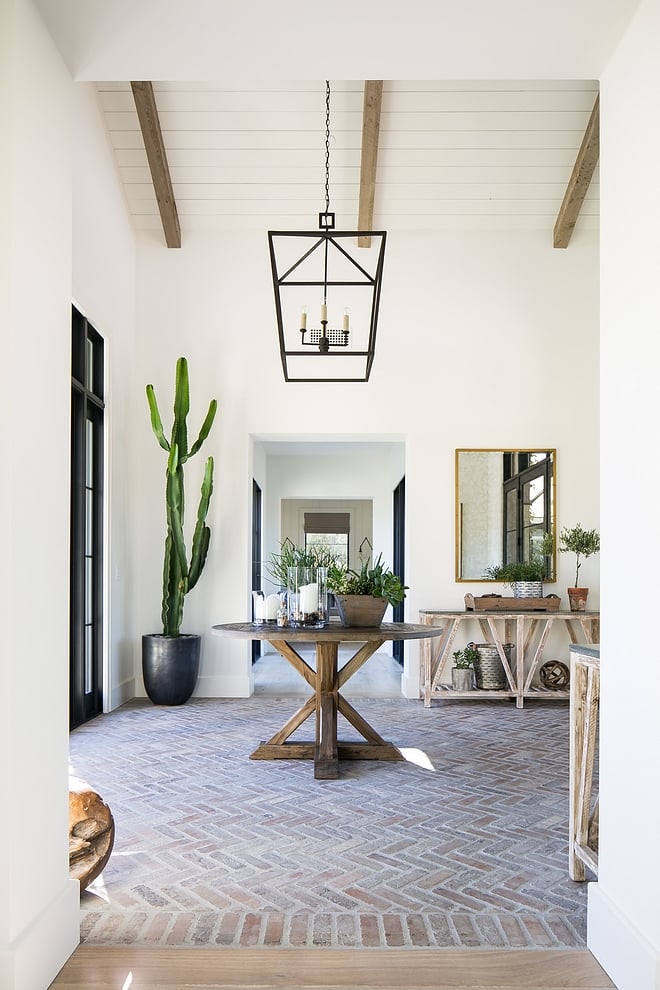
While Erin’s go-to style always depends on the vibe of the space, she does have a few perennial favorites she can rely on time and again. “I personally love marble, because it develops etching and some slight discoloration over time. That’s not for everybody or every style of space, but I think the signs of aging give a space character,” she says.
“I also really love tiles that feel classic with a twist. For example, there are brick tiles that are basically thin bricks laid like tile, and they look gorgeous and function beautifully in mud rooms and entryways, especially when they’re laid in a fun pattern. I also really love the durability of porcelain, and am most drawn to tiles with a handmade quality and some texture because they reflect light in a really interesting way and add lots of depth to a space,” Erin says. “And of course, patterned tile can make a really fun statement in the right space—I love using patterned tiles in laundry rooms and small bathrooms for a punch of personality.”
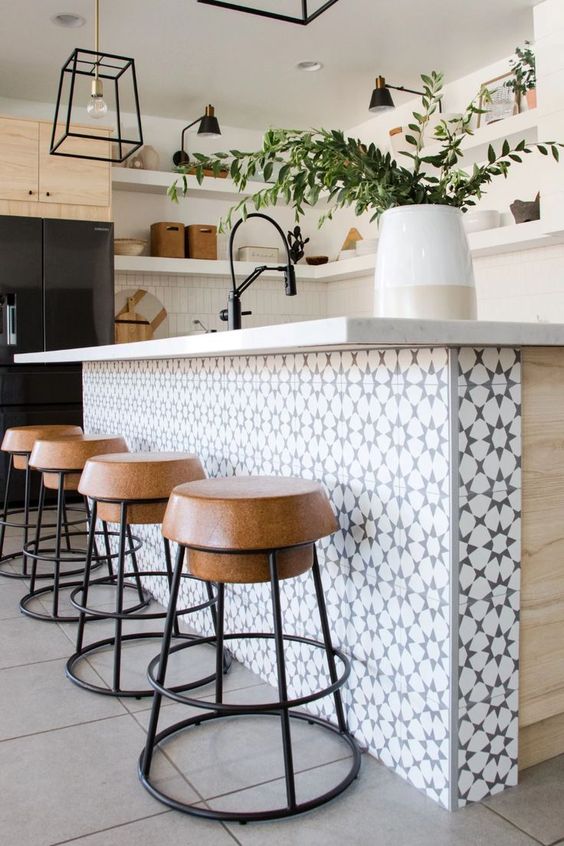
In addition to bathrooms, mud rooms, kitchens and entryways, Erin suggests using tile in places where you might track in dirt or sand. “In houses by the beach, tile is great throughout the home to keep sand from damaging wood or sinking into the carpet,” she says, noting that if you’re not into the tile look, you can choose a wood-look tile instead. Tiles work wonders in small spaces, too, Erin says. “I love to do bold, patterned floors in laundry rooms or a bright color in a powder room. It’s a great way to add unexpected pop and personality without committing to a huge space.”
Of course, tiles are also commonly used as back splashes—but they aren’t just for the kitchen walls. Splashy, patterned tiles make a beautiful addition to the side of a kitchen island and create visual interest when applied to stair risers (the flat, front part of the stair).

We’re all interested in sustainability, and tile is a fantastic, eco-conscious choice to add a hint of green living to your home. While the sustainability factor depends on the type of tile you choose, ceramic and porcelain tiles are very sustainable, Erin says. “They’re made from all-natural, plentiful resources like clay and quartz, and they don’t require any harsh cleaners,” she says. “They’re also very long-lasting, unlike materials like carpet and laminate, which wear quickly and need to be replaced every few years.”
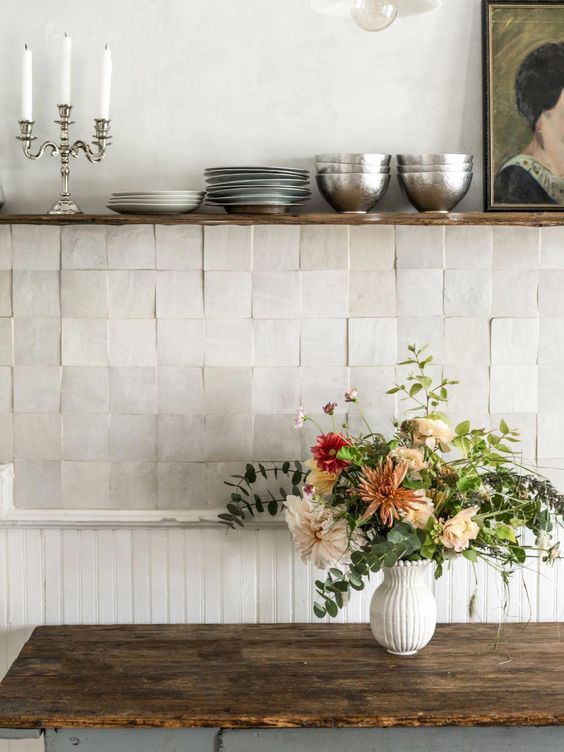
Tiling floors sets the tone for a fresh new look. Find yours with our interior design style quiz.

